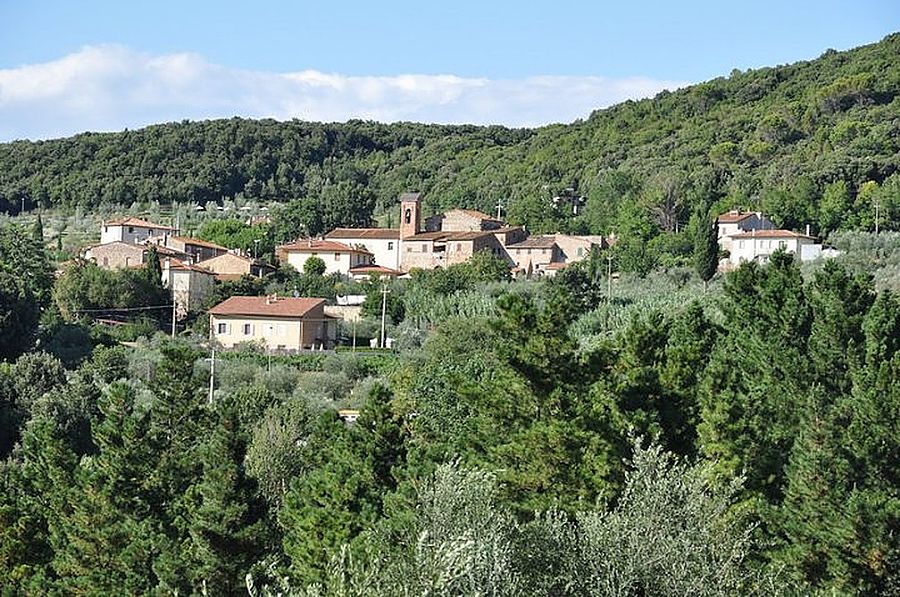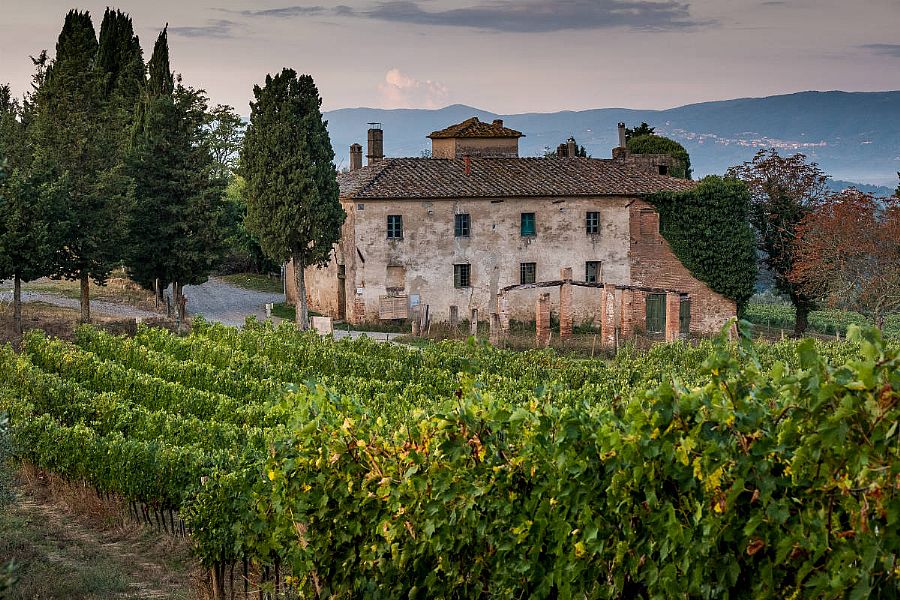Iano

In the Tuscan hills near Volterra, the hamlet of Iano is part of the municipality of Montaione, a village amidst rolling landscapes and homey hospitality. Roughly part-way between Volterra and San Miniato, there are fossils and minerals in the carbon-rich hills.
Evidence of Etruscan habitation here was found in the form of funerary monuments dating to the 5th century BCE. The Romans next occupied the territory. The church Sant'Andrea in Alliano was built in 1004 and the town was a holding of the influential Aldobrandeschi clan. It joined with San Miniato in 1321 but was then part of the Firenze republic in 1370. It became part of Montaione in 1833, along with Camporena.
It was an area of extensive woods, with the lumber providing important fuel for the carbonari (charcoal-burners) and the vetrerie (glass works) in Montaione and Gambassi, as well as for heat and cooking, of course. The minerals, stone and semi-precious stones of the hills were also important, with onyx, travertine, and granite contributed to the artisan trades and quarry jobs. They continued until the 1980s.
Above town is the Santuario della Pietrina ("little stone"), which affords splendid panoramas to Volterra and Pisa. The simple stone chapel is usually closed, but worth the trip for the views.
The nearby hamlet of San Vivaldo is called "the little Jerusalem of Tuscany" as a spiritual place with a series of chapels and a Franciscan monastery with lovely artwork.
Browse carefully selected rental villas in Iano.

 Amalfi Coast
Amalfi Coast Sorrento Coast
Sorrento Coast Tuscany
Tuscany Cilento National Park
Cilento National Park Lake Como
Lake Como Rome and Latium
Rome and Latium Umbria
Umbria Capri and Ischia
Capri and Ischia Venice
Venice Puglia (Apulia)
Puglia (Apulia) Liguria
Liguria Sicily
Sicily Lake Maggiore
Lake Maggiore Lombardy
Lombardy Sardinia
Sardinia Lake Garda
Lake Garda Abruzzo and Marche
Abruzzo and Marche Calabria
Calabria

